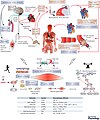File:Central (cardiovascular) and peripheral (skeletal muscle) adaptations to exercise training.jpg
Appearance

Size of this preview: 499 × 600 pixels. Other resolutions: 200 × 240 pixels | 399 × 480 pixels | 639 × 768 pixels | 852 × 1,024 pixels | 1,336 × 1,606 pixels.
Original file (1,336 × 1,606 pixels, file size: 501 KB, MIME type: image/jpeg)
File history
Click on a date/time to view the file as it appeared at that time.
| Date/Time | Thumbnail | Dimensions | User | Comment | |
|---|---|---|---|---|---|
| current | 04:40, 6 December 2023 |  | 1,336 × 1,606 (501 KB) | Buidhe | Uploaded a work by John A. Hawley, Michael J. Joyner, Daniel J. Green from https://physoc.onlinelibrary.wiley.com/doi/full/10.1113/JP278761 with UploadWizard |
File usage
The following page uses this file:
